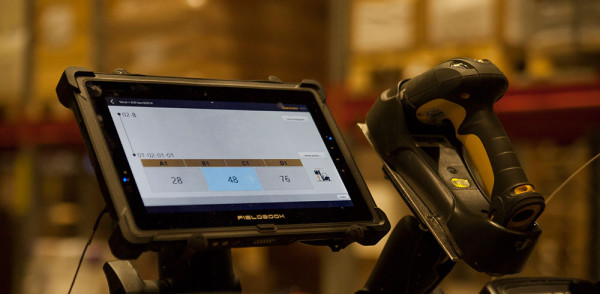Paper picking lists, inventory taking of the entire warehouse twice a year and small inaccuracies in stock balances are standard for many warehouse and company today. The ineffectiveness of work cannot always be recognized, especially when core operations consist of several manual work phases: inputting information and warehouse bookkeeping using ERP, creating dispatch notes with a separate system and changing picking lists on the go.
Decreasing picking and delivery errors are goals for which every efficient warehouse aims. The aforementioned problem points significantly decreased in the operating environment of Scanoffice Oy in Vantaa once LeanwareWMS was implemented.
“We noticed savings rights away through the elimination of job phases. In addition, we have finally achieved the level of traceability with shipments where the number of human errors has been dramatically reduced. Now, when a customer asks about an order, we are able to easily demonstrate what and when was delivered to the customer from our warehouse,” says Scanoffice’s Head of Purchasing and Logistics Pekka Sandberg.
“The new system shows our warehouse balances in real time and truthfully, a fact which has raised the delivery reliability of our company to a completely new level.”

Scanoffice’s product selection includes air source heat pumps, air water heat pumps, ground source heat pumps and a wide variety of other air processing devices, tools and supplies. The high seasonal demand for products during hot summer periods raises the required number of warehouse workers to almost double, and additional people have to be hired.
“The training of new employees in the old paper list guided picking method was so slow that it took several days before the new employee was ready to work on their own,” says Scanoffice’s Warehouse Manager Aki Aikio.
“Using LeanwareWMS, the training of a new employee can be done in a matter of hours, thanks to which our warehouses stay on top of things also during the busiest seasons. At the same time, work has become more meaningful, as instead of papers, sign offs and inputs to the system are done via tablet,” Aikio describes.
It is not unusual at Scanoffice that there are changes to customers’ orders before delivery. Before, the changes took a long time to clarify with the sales assistant and the warehouse manager. In the new system, information on changes are updated in real time also into the ERP system, eliminating the chances of unclarities.
Leanware suggested Scanoffice transferring towards dynamic warehousing in conjunction with the new warehouse management system. The idea was first met with skepticism, but its benefits were proven through practice. Now the warehouse’s use of space has been optimized, as products are no longer located based on product groups.
“It was fantastic to see that Leanware had the courage to advocate for the change despite our initial doubts and objections. Afterwards we have noticed that there was no benefit in the old product group based way of thinking. Through dynamic warehousing, the use of space in our warehouse can be better optimized. Additionally, as inventory taking is now done alongside picking, the warehouse doesn’t have to be closed due to taking inventory,” Sandberg mentions.
After being in use for a year now at Scanoffice, LeanwareWMS has proven its ability to decrease the requirement for repetitive work, and especially the increase in delivery reliability has raised the company’s customer satisfaction levels.
“The good and problem-free success of the challenging project has given us more energy and new drive for various further development projects: the system has been used for constructing e.g., a reward system, and the possibility of implementing new kinds of warehouse shelves could be done easily using LeanwareWMS. Leanware has proven to be an excellent partner for sparring about these kinds of development ideas,” says Sandberg.